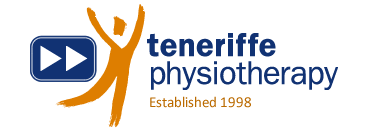Asthma and EIB in Athletes
This week I reviewed a recent journal article entitled “Exercise-Induced Bronchoconstriction in Athletes”. With winter approaching and more people suffering from respiratory problems I thought it would make a good topic. First, let’s look at some definitions.
Bronchoconstriction is narrowing of the airway tubes leading down to our lungs. This reduces the flow rate of air as we breathe in and out, causing shortness of breath, chest tightness and a wheeze. There are three components causing the narrowing:
– muscle spasm of the muscular wall of the airway tube (bronchospasm)
– inflammation or swelling of the airway walls
– excessive mucous thickness lining the inside of the airway walls (eg when you have an infection)
Asthma is a medical condition in which bronchoconstriction is triggered by allergans like pollens, dust, dry air, animal hair, smoke, air pollution and exercise.
Exercise-induced bronchoconstriction (EIB) refers to the airway narrowing provoked specifically by exercise. About 90% of asthmatics suffer from it, along with 10% of the non-asthmatic population. The background physiology is too detailed to discuss here, but basically if you are breathing large volumes of dry and/or cold air there will be water loss and temperature changes in your airways that cause the three components of bronchoconstriction listed previously.
Exercise at 80% of your maximal breathing rate for 5-8 minutes can be enough to cause EIB. Some athletes will feel the symptoms while exercising whereas others will be worse 5-10 minutes after ceasing exercise and it can take 30-60 minutes to resolve if no medication is taken.
It is important to diagnose and treat because it can cause sudden death even in young, competitive athletes with no previously diagnosed asthma or EIB. The highest risk occurs in endurance or high-ventilation sports (including triathlon) performed in dry, cold air conditions (eg early morning training and races). Chlorine in pools has also been shown to be a trigger in some swimmers.
Testing and Diagnosis
If you are concerned that you suffer from EIB you should first see your GP so that he/she can consider your symptom and medical history, family history and do a physical examination. From there, a Spirometer machine is used to test your “FEV1” – the volume of air you can force out of your lungs in one second.
The initial spirometry test should be done on a day when you haven’t exercised. After performing the test a bronchodilator medication (eg Ventolin) is administered and the test repeated. If there is a significant improvement in your FEV1, this indicates that you have bronchoconstriction which may be due to asthma.
To test for EIB you should return on a separate day, to make sure the Ventolin has no effect on your test. Again a baseline test should be performed but this time you will then be required to provoke your EIB before re-testing. Provocation could be via your relevant exercise, a chemical inhalation (eg the Histamine challenge test) or the EVH test (Eucapnic voluntary hyperventilation – required by the IOC for Olympic athletes but not currently done in routine practice). If the FEV1 has been reduced by at least 10% after provocation, congratulations you have EIB!
Treatment
This will depend on the severity of your condition and your doctor will prescribe medication as best fits your needs. Generally Ventolin is used as the first choice for EIB, taken 15-20 minutes prior to commencing exercise as follows:
– shake the inhaler for 5 seconds
– position the inhaler 5cm in front of your open mouth
– simultaneously squeeze down on the inhaler as you breath in slowly through your mouth
– hold your breath for 10 seconds before exhaling
– wait for a minute before taking a second puff in the same manner
This routine usually gives relief from EIB for over 3 hours in most people. If Ventolin is proving inadequate, other inhaled medications such as corticosteroids (eg Pulmicort) and long-acting bronchodilators (eg Serevent) may be added, especially in asthmatics. There are further drug options if these measures are still not providing symptom control.
Here are a few other hints that will reduce the severity of EIB:
– make sure you warm-up gradually
– wear a face mask to warm and humidify the inhaled air when the conditions are cold and dry
– breath through your nose as much as possible as it will filter, warm and humidify the air
– long slow breaths using the lower parts of your lungs are more relaxed and efficient than short fast breaths using the upper part of your lungs
– avoid known triggers eg don’t run on a freshly mowed park if you know that is a problem for you
– if your lungs have excess mucous/phlegm, your physio can show you the best ways to remove this
Swimming for Asthma and EIB
I’d like to make specific mention of swimming as it has been commonly recommended for asthmatics for many years. Potential benefits include breathing the relatively humid air just above the water surface, improved inspiratory muscle efficiency and improved general aerobic fitness. Unfortunately these could be counteracted by chlorine sensitivity, cold water and cold, dry air. So perhaps we should qualify our recommendations to say that it would be best to swim in a warm pool that has minimal chlorine treatment, on a typically warm and humid Queensland afternoon, or consider an indoor pool environment.
The Take Home Message
EIB is a preventable airway narrowing that can lead to poor performance, illness or even death in an otherwise young and healthy athletic population.
Take care until next time!
Reference: Exercise-induced bronchoconstriction in athletes.
Parsons JP & Mastronarde JG
Chest, 2005 Dec; 128(6):3966-74
Acknowledgement: I would like to thank Dr Mark Young for his assistance with this topic.
